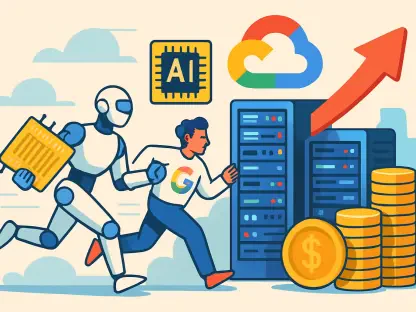In the rapidly evolving field of generative AI, converting complex documents into AI-ready formats is a pressing challenge. Chloe Maraina, an expert in business intelligence and data science, shares insights on how Docling—a tool developed by IBM Research—addresses these issues with advanced document processing capabilities.
Can you explain what Docling is and what motivated its development?
Docling is an open-source toolkit designed to transform unstructured documents into formats that modern AI systems can easily use. The development of Docling was motivated by the need to tackle the challenges of integrating complex documents into AI workflows. Traditional methods often fail to capture document structure and lead to inefficiencies, so IBM aimed to provide a more advanced solution.
How does Docling help in transforming unstructured documents into formats usable by AI systems?
Docling leverages state-of-the-art models for layout analysis and table structure recognition. It converts formats such as PDF, DOCX, and XLSX into a unified representation called DoclingDocument. This enables AI systems to process the rich content structures these complex documents have.
What are the key capabilities of Docling’s advanced PDF understanding?
Docling’s advanced capabilities focus on precisely analyzing layouts and recognizing table structures. By utilizing models like RT-DETR for layout classification and TableFormer for complex table recovery, Docling ensures that even intricate document elements are accurately converted for AI use.
Why is avoiding traditional OCR approaches beneficial in document processing?
OCR methods can be error-prone and resource-intensive. Docling maintains the structural integrity of tables and formulas by bypassing traditional OCR where possible, reducing computational demands and speeding up processing times significantly.
Can you describe the process of using Docling for document conversion?
Using Docling is designed to be a seamless experience. Users can initiate document conversion through a command-line interface, allowing quick and efficient transformation of documents into AI-friendly formats without compromising data privacy.
What motivated IBM Research to open-source Docling?
IBM Research open-sourced Docling to foster collaboration and innovation within the developer community. The reception has been positive, with Docling amassing impressive attention on GitHub and indicating a strong community interest in high-quality document processing tools.
In what ways does Docling integrate with AI applications and tools like LangChain and Haystack?
Docling’s plug-and-play integrations with AI tools streamline the process of utilizing transformed documents within AI applications. This integration is beneficial for enterprises and developers by enhancing the efficiency and accuracy of data processing for AI use cases.
What are the primary use cases for Docling in AI and enterprise applications?
Docling is ideal for retrieval-augmented generation, knowledge base creation, LLM fine-tuning, and enterprise data integration. It supports RAG systems by efficiently processing documents to improve vector search tasks.
How is Docling being adopted by major companies, and what are the prospects for its future development?
Major companies like Red Hat have shown keen interest in Docling, integrating it into their AI offerings. This adoption hints at a promising future, with ongoing development under the LF AI & Data Foundation ensuring Docling continues to evolve.
What role does the LF AI & Data Foundation play in the development and maintenance of Docling?
The LF AI & Data Foundation provides a robust platform for the continued growth and maintenance of Docling, ensuring that it remains a cutting-edge solution for document processing in AI workflows.
Can you discuss some challenges and opportunities in document processing for AI that Docling addresses?
Docling addresses the challenge of converting various document formats into AI-ready outputs while preserving structure, offering new opportunities for advancements in AI applications that rely on document data.
What are the advantages of having a unified document representation format like DoclingDocument in AI workflows?
The DoclingDocument format ensures consistency in data representation, retaining provenance details and layout information. This unified approach simplifies integration into AI systems, improving both accuracy and efficiency.
Do you have any advice for our readers?
Stay curious and open to exploring new tools like Docling that push the boundaries of what’s possible with AI. Embracing innovative solutions can significantly enhance the ability to manage and leverage data in powerful ways.









